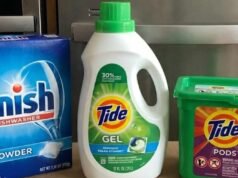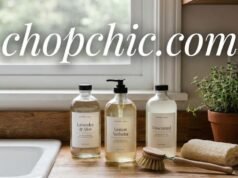Have you ever stood in the cleaning aisle, staring at a dozen boxes all claiming to be “eco-friendly,” and just thought okay, but… are they, really? I’ve been there. The language on those labels can feel more like marketing than actual helpful guidance.
So, let’s dig in a little. What should we actually look for if we care about the planet and about what we’re washing our plates with?
It Starts with What’s Inside
One of the first things I’ve learned? Flip the box. Check the ingredients. And no, “clean and fresh scent” is not an ingredient. Watch out for things like:
- Phosphates – Sounds harmless, but they mess with aquatic life by feeding harmful algae.
- Chlorine bleach – Tough on stains, sure. But also toxic to fish and potentially harmful to humans.
- Synthetic fragrances and dyes – Totally unnecessary, and often irritating for sensitive skin.
So what’s better? I lean toward detergents made with:
- Plant-based surfactants – These do the heavy lifting when it comes to grease.
- Enzymes – They break down leftover food without needing harsh chemicals.
- Citric acid – Naturally softens water and boosts cleaning power.
- Essential oils – If you like a light scent, these feel way less artificial.
Is It Safe for the Environment After the Wash?
Here’s something we don’t always think about: where does that soapy water go after it’s drained? A good green detergent should break down easily what people call biodegradable. And it should be safe for greywater systems if you’ve got one, or at least not harm wildlife down the line.
That’s especially important if you’re living off-grid or using a septic system.
What About the Packaging?
This one always bugs me: a “natural” product wrapped in layers of plastic? No thanks.
Some better options I’ve come across:
- Refill systems – Keep the container, just buy the powder or pods.
- Cardboard boxes – Simple, recyclable, no fuss.
- Concentrated pods – Less weight, fewer emissions during shipping.
The less packaging, the better. And if it has to be plastic, recycled content is a decent middle ground.
The Labels You Can Actually Trust
Some claims are just fluff but there are legit certifications out there. I keep an eye out for:
- EPA Safer Choice
- EcoCert
- Leaping Bunny (because cruelty-free still matters)
- USDA BioPreferred
If it’s got one of these, chances are the company did more than just throw the word “green” on the box.
Ethics Beyond the Product
You know what’s even more reassuring than a good ingredient list? A brand that actually talks about what they’re doing. I’ll usually poke around their site to see if they mention things like:
- Where their raw materials come from
- Whether they offset their shipping emissions
- If they manufacture locally or ethically
Some of them even share supply chain data, which honestly? Kind of impressive.












[…] probably heard it all before eco-friendly dishwasher detergents are “just as good” as conventional ones. But are they really? We were curious too. So […]
[…] let’s be honest. Walking through the detergent aisle these days can feel like navigating a jungle of green leaves, recycled paper fonts, and […]